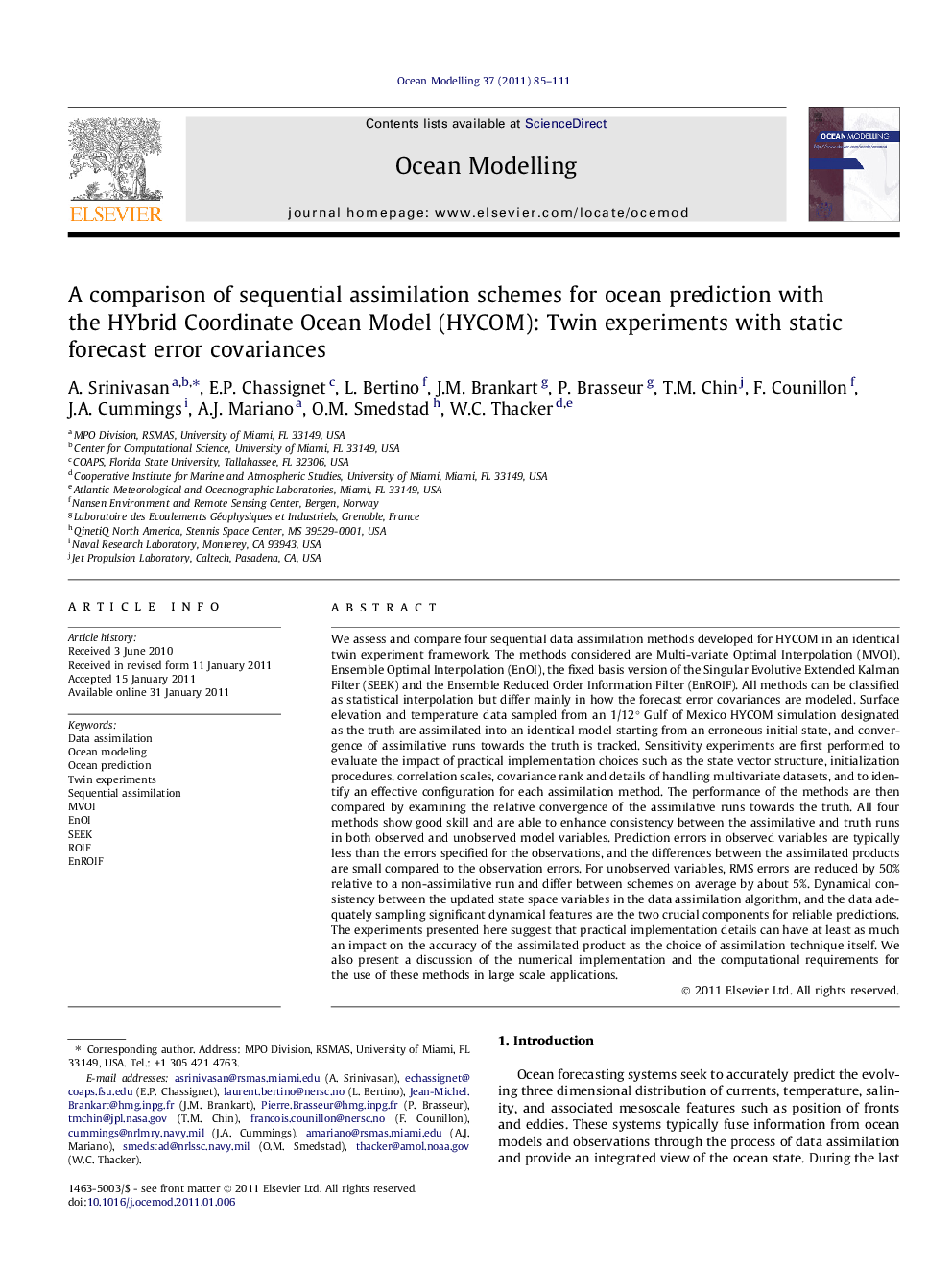| کد مقاله | کد نشریه | سال انتشار | مقاله انگلیسی | نسخه تمام متن |
|---|---|---|---|---|
| 4552275 | 1627806 | 2011 | 27 صفحه PDF | دانلود رایگان |

We assess and compare four sequential data assimilation methods developed for HYCOM in an identical twin experiment framework. The methods considered are Multi-variate Optimal Interpolation (MVOI), Ensemble Optimal Interpolation (EnOI), the fixed basis version of the Singular Evolutive Extended Kalman Filter (SEEK) and the Ensemble Reduced Order Information Filter (EnROIF). All methods can be classified as statistical interpolation but differ mainly in how the forecast error covariances are modeled. Surface elevation and temperature data sampled from an 1/12° Gulf of Mexico HYCOM simulation designated as the truth are assimilated into an identical model starting from an erroneous initial state, and convergence of assimilative runs towards the truth is tracked. Sensitivity experiments are first performed to evaluate the impact of practical implementation choices such as the state vector structure, initialization procedures, correlation scales, covariance rank and details of handling multivariate datasets, and to identify an effective configuration for each assimilation method. The performance of the methods are then compared by examining the relative convergence of the assimilative runs towards the truth. All four methods show good skill and are able to enhance consistency between the assimilative and truth runs in both observed and unobserved model variables. Prediction errors in observed variables are typically less than the errors specified for the observations, and the differences between the assimilated products are small compared to the observation errors. For unobserved variables, RMS errors are reduced by 50% relative to a non-assimilative run and differ between schemes on average by about 5%. Dynamical consistency between the updated state space variables in the data assimilation algorithm, and the data adequately sampling significant dynamical features are the two crucial components for reliable predictions. The experiments presented here suggest that practical implementation details can have at least as much an impact on the accuracy of the assimilated product as the choice of assimilation technique itself. We also present a discussion of the numerical implementation and the computational requirements for the use of these methods in large scale applications.
Research highlights
► Four covariance matrix approximations for data assimilation with HYCOM are compared.
► Assimilation into HYCOM is most effectively done in the native generalized coordinates.
► 3D covariances perform better than vertically decoupled and separable 2D covariances.
► Surface information alone is insufficient to correct salinity and temperature at depth.
Journal: Ocean Modelling - Volume 37, Issues 3–4, 2011, Pages 85–111